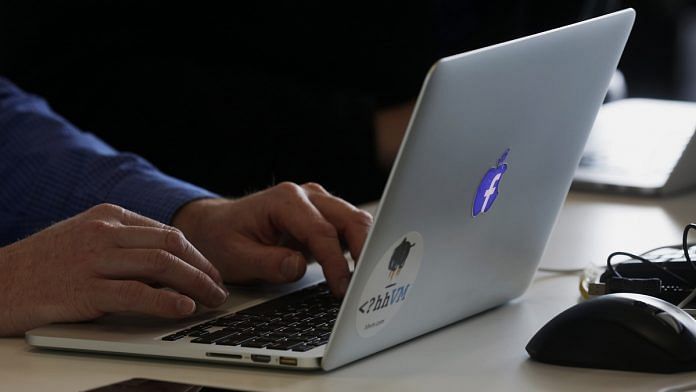To be effective, terrorism must have an audience. The New Zealand attackers simply used a GoPro and live streaming on Facebook while they carried out the massacre. With social media and the mobile internet, terrorists can not only reach a global audience, they can get their message across unfiltered. These, unfortunately, are near-perfect conditions for terrorism.
When Brenton Harrison Tarrant, the terrorist who carried out the atrocity at two mosques in Christchurch last week, killing at least 50 people, streamed his act live on Facebook, he proved, yet again, that terrorism is theatre. Brian Jenkins, an early analyst of terrorism, argued in 1975 that in “the age of mass communications…terrorism is aimed at the people watching.”
While some terrorists make specific demands — like seeking the release of their fellows — the strategic purpose of the terrorists’ actions is to draw attention to their political cause, widen their gross public support and enlist new followers. Terrorism is, as a 19th century political activist described it, “propaganda of the deed.”
Also read: Facebook’s bad week gets worse with live-streaming of mass shooting
This is where the media comes in, with its audience. The most spectacular act of terrorist violence would have little impact if people are unaware of it. As Jason Burke points out, terrorism “in its modern form, has its origins in the mid to late 19th century – in the same era that saw the spread of both the mass media and democracy. Without the media, only a small number of people would know that an attack has taken place, and without democracy, those wielding power would have little reason to heed the sentiments that such violence provokes.”
It is therefore not surprising that the rise of terrorism runs parallel with the spread of mass media. Consider the past two decades. Al Qaeda belonged to the 24-hour news television generation and 9/11 was designed for consumption by global television audiences. So also were the recorded videos that Bin Laden and al-Zawahiri (remember him?) would release to Al Jazeera from time to time. A few years later, the Lashkar-e-Taiba’s 26/11 attack on Mumbai stuck with television, but exploited live coverage by competing channels to maximise its effect. A significant change came with the ISIS, which put out gruesome but slickly produced videos for distribution on internet platforms, and thus bypassed editorial gatekeepers who previously had the power to decide what their audiences could see.
In the past couple of years, it has become possible for terrorists to broadcast their actions live to a global audience, leaving governments and social media platforms with the doomed task of deleting the footage. Like Christchurch.
Also read: Facebook’s policy shift is less about privacy and more about profits
Terrorism works when the audience identifies with the terrorists’ cause, and fails when it sympathises with the victims. As long as there were media gatekeepers and editorial norms, coverage could be shaped to make the audience generally sympathise with the victims, if not feel repulsed by the terrorists. But now, the terrorist can, inexpensively, take his case directly to a worldwide audience. Sure, a majority of the audience will still recoil in horror. There will however be some people who will openly applaud the terrorist, identify with his cause, and at the margin, encourage more people to do the same. This is what is happening right now with Tarrant’s atrocious footage and manifesto.
Social media has thus transformed the threat from terrorism: you don’t need to be a well-resourced, state-supported organisation. You can be an individual, plugged into an echo chamber in a highly polarised public discourse, with some means to create spectacular violence.
The best that the governments can do is make the actual attacks harder to carry out and, when they do occur, limit the physical damage — by tightening security, improving surveillance, denying access to arms and explosives and so on. Yet, if you make airplanes hard to hijack, they’ll go on a shooting spree. If you make explosives hard to procure, they’ll use trucks to mow people down. If you ban automatic weapons, they’ll find some other means.
Also read: Indian high commission confirms death of 5 Indians in New Zealand massacre
The methods will change, but terrorism will be an increasingly attractive option for people in the Information Age to promote their politics. It’s not going away any time soon. Sorry to bring you the bad news.
What can we do about it? One option is to ban social media, censor information and become a China-like authoritarian state. Terrorism will not be effective if information is restricted, surveillance is pervasive and people are politically powerless. Another option is to ensure that our society continues to identify with the victims, and abhors political violence of any kind. The former is undesirable and the latter is perhaps unattainable in practice. We need to look for better options.
Tailpiece: It is a misconception that the term “terrorism” cannot be defined. Analytically, there is a significant degree of convergence on the definition. It is somewhere along the lines of “the use or threat of use of violence against innocent targets for a political purpose, by creating fear and anxiety”. The problem arises because people usually conflate the definition of the term with a value judgement to its purpose. Just because the United Nations cannot arrive at an accepted definition of terrorism doesn’t mean there isn’t one.
The author is director of the Takshashila Institution, an independent centre for research and education in public policy.



